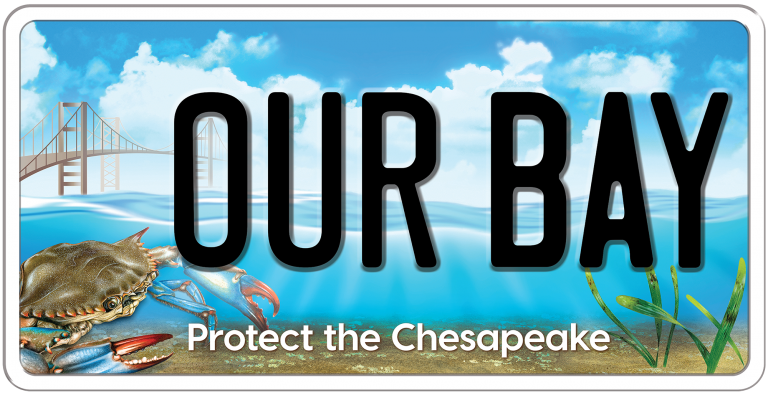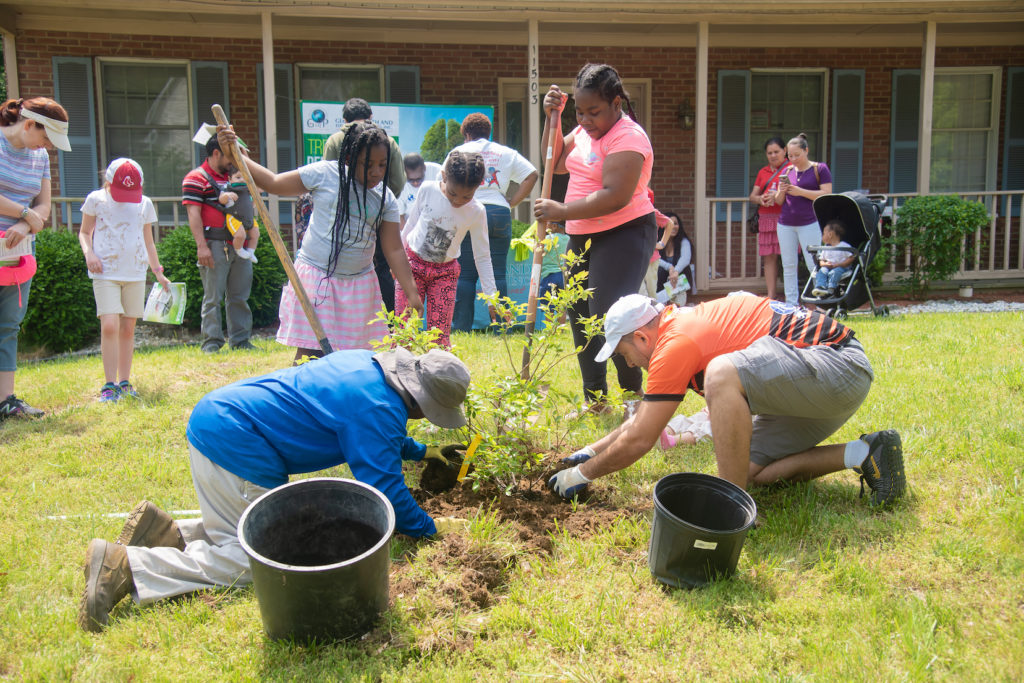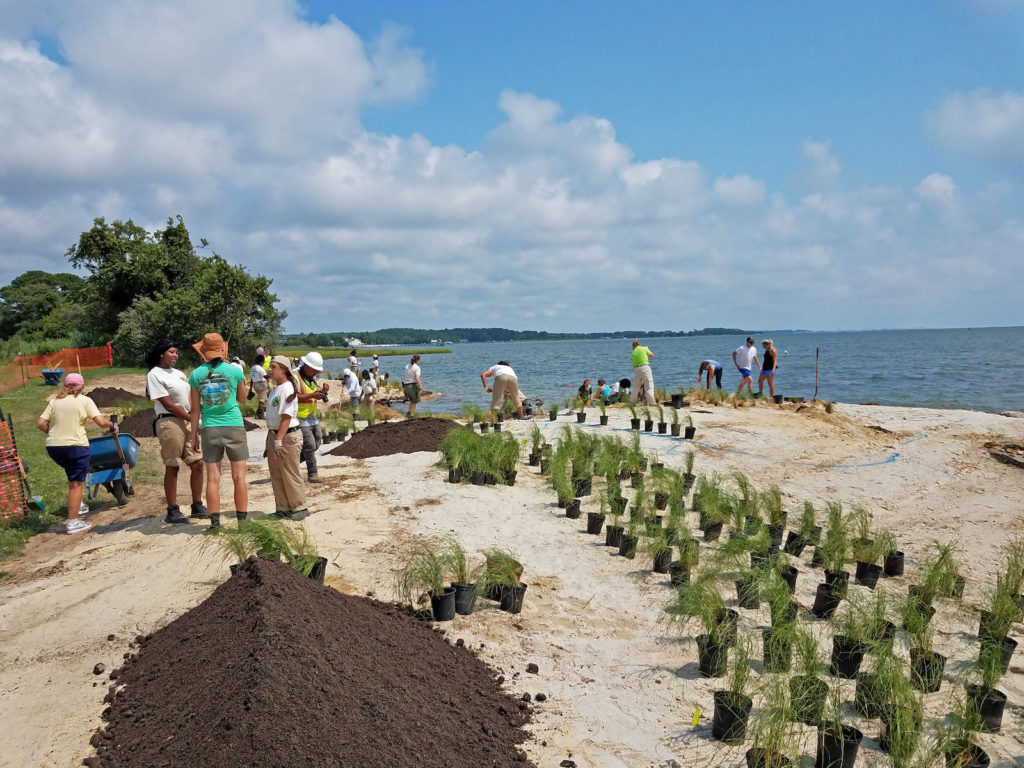If you live in the state of Maryland, you may have wondered why you pay extra for that pretty blue Chesapeake Bay license plate. Many people assume that it’s to generate revenue for the state. In reality, $10 goes to the Chesapeake Bay Trust to fund environmental projects and the other $10 goes to the state for the purpose of running the program.

The Chesapeake Bay Trust, headquartered in Annapolis, MD, distributes funds in the form of grants to groups, communities, and neighborhoods to support projects that improve the lives of local residents. In 2022, it granted $14 million across 400+ different projects through schools, community groups, faith-based groups, watershed organizations, and even other non-profits.
“You don’t have to be a big organization to receive funding,” notes Megan Sennett, communications and development officer for the Chesapeake Bay Trust. “We support many different types of communities and organizations that work to improve the health of our natural resources and communities.”
In addition to the funding they receive from Chesapeake Bay license plate sales, the Trust also receives donations through state income tax forms and boating, fishing, and hunting licenses, as well as from public, private, and individual donors.
Supporting a wide variety of projects
Environmental nonprofits tend to have a niche focus, but one of the benefits of working for the Chesapeake Bay Trust, Sennett says, is the ability to see so many different types of projects in motion all at once. For example, the Trust recently awarded grants for the following:
1. An upgrade to the parking lot of the Jefferson Medical Center. Located in the small town of Ranson in West Virginia, the Jefferson Medical Center found itself with a parking problem. Its parking lot had been designed so poorly that it flooded every time it rained. But it wasn’t just the lot that flooded. The flood impacted the entire area, including the local Dairy Queen. “Just that one improvement will significantly improve the lives of all of the town’s residents, not just the people who work at the medical center,” says Sennett.
2. Green infrastructure projects in Maryland, Pennsylvania, Virginia, West Virginia, and Washington, D.C. At the end of June, the Trust announced nearly $2 million in grants to support planting trees in downtown areas. “You may not think it, but the impact of just planting trees is huge,” Sennett explains. “It reduces heat and greenhouse effects in that area, and it promotes mental and physical well-being. These small changes can improve lives and the infrastructure in a town tremendously.”

3. Replacing bulkheads with living shorelines at the Annapolis Maritime Museum. “By taking out bulkheads and installing living shorelines, it improves biodiversity and helps reduce flooding,” Sennett explains. “Living shorelines provide the habitat needed by the native species. Plus, they are more permeable surfaces, which gives the water somewhere to go.”

A commitment and passion to serve
Everyone at the Trust is incredibly passionate about what they do. From helping applicants navigate the nuances of the grant process to seeing the completed project through, the entire team is deeply invested. Many even volunteer to work shoulder to shoulder with grant recipients because they are so excited about these projects.
“The other day, our Urban Trees Program manager, Greg Burks, was at the Maryland Public Works meeting giving a presentation,” Sennett recalls. “Governor Wes Moore was there, and when Greg was finished, the governor had this huge smile on his face. He said Greg’s energy was infectious. That’s how everyone is here.”
Sennett adds that even when people have their grants denied, the Trust will work closely with them to try to find other options.
Want to help? Buy a plate!
Interested in supporting the Trust’s environmental efforts? Because the bulk of the organization’s funding comes from Chesapeake Bay license plates, Sennett makes it simple. “Buy a plate!” she says.
In fact, she and the Trust’s marketing officer, Rebecca Roemer, recently spent nearly two months visiting car dealerships in Maryland to encourage them to develop programs to “Just Ask!” customers to upgrade to the Chesapeake Bay plate every time they buy a new or used car.
“A lot of times, buyers know that they like how the blue plate looks, but they don’t know the purpose behind it,” Sennett concludes. “We want everyone to know that, sure, it looks great, but your money also goes to real programs and real change. That is super exciting.”
Don’t live in the state of Maryland but still want to help? There are a number of ways to give through the Chesapeake Bay Trust’s website.
Sustainably,
Bobby Firestein
For our 2023 Ecoprint calendar, Protecting the Natural Beauty of the Chesapeake Bay, we have partnered with 13 different organizations, all dedicated to helping solve the environmental challenges in this important ecological hub. The Chesapeake Bay Trust is our featured partner for the month of July. To get your own 2023 Ecoprint calendar, click the button below.

